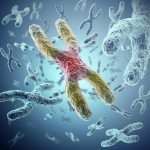When I was growing up, my parents made me eat everything on my plate. My mom would always say, “there are starving children in China.” Then, I would be forced to sit at the table until every scrap on my plate was gone.
Growing up in a family where this rule was enforced can lead to a lifelong struggle with food and weight. Basically, it makes it impossible to stop eating when you are full because you are “programmed” to eat everything on your plate.
Plus, most people don’t understand that if they eat until they are “full,” they’ve already overeaten. That’s because it can take up to 20 minutes after we start eating for signals that register fullness to reach the brain.
The Okinawan people of Japan don’t have this problem. Instead, they follow the practice of “hara hachi bu,” which translates to “stop eating when you are 80% full.”
By stopping when they feel 80% full, they will actually be 100% full within the next 15 or 20 minutes.
Eating this way is not only associated with weight loss, it also promotes healthy aging and a longer life expectancy.
How Hara Hachi Bu Affects the Body
Hara hachi bu is basically a self-imposed form of calorie restriction. And it might be part of the reason Okinawa has the highest population of centenarians in the world.
You see, calorie restriction is associated with increased autophagy, which is a very significant biological process when it comes healthful aging.
When this mechanism is triggered, it helps you get rid of old, malfunctioning mitochondria and replace them with new ones. These are what power every cell in your body with youthful energy… your brain, heart, muscles and other organs.
Autophagy also helps break down misfolded proteins and other cellular waste. So it’s a huge boost to your immune system and helps protect your body from infections, autoimmune disorders and inflammatory diseases.
Now, this is very significant when it comes to anti-aging. That’s because aging begins when cellular damage exceeds the rate of repair and turnover.
When this happens, cellular waist starts building up. And eventually it will affect normal cell function. Insufficient autophagy even has links to neurological disorders, like Alzheimer’s disease.
This means practicing hara hachi bu has some really great benefits. But it can be difficult to practice if you feel the need to eat everything on your plate at each meal. So let’s take a look at a few things that can help you master it.
How to Start Practicing Hara Hachi Bu
Your goal shouldn’t be to feel full after a meal. And you definitely shouldn’t feel over-stuffed. Instead you want to feel satisfied, even if you could eat a little more.
One of the first things you can do is cut your portions. If you have less food on your plate, then it will be easier to clear your plate without overeating. So aim for reducing the amount of food on your plate by 20% to 25%. (If it helps, you can even use smaller plates and bowls.)
Then, place your entire focus on your meal. No TV, no texting or web browsing. It’s too easy to mindlessly overeat when you are involved in other things at the same time.
And don’t forget to take the time to chew your food slowly. When people chew their food longer, the stomach sends signals to shut down the “I’m hungry signal” sooner than it does when food is wolfed down. So it helps you feel fuller, faster and reduces food intake.
Plus, a study published in Obesity found that chewing longer increases the body’s ability to burn fat. It showed that people burned an extra 10 extra calories when eating a 300-calorie meal when they chewed their food until there weren’t any lumps left in it.
So when you sit down for your meals, chew each bite 20 to 30 times. By the time you swallow, it should be the consistency of a smoothie.
If you need to find a way to slow yourself down, try setting your fork and knife on the table while you chew. After all, it’s hard to focus on chewing when you have the next bite of food already prepared to stuff into your mouth! Don’t pick your fork up again until you have swallowed the previous bite.
And by the way. Reduced calorie intake isn’t the only way to trigger autophagy. You can also activate it by eating a time-restricted diet.
The concept is surprisingly simple. You just need to choose a window between six and eight hours a day to eat all the healthy and wholesome s you want. Then fast for the remaining 16 to 18 hours, sticking with only no calorie beverages.
SOURCES:
Mizushima N, Levine B, Cuervo AM, Klionsky DJ. Autophagy fights disease through cellular self-digestion. Nature. 2008 Feb 28;451(7182):1069-75.
Bagherniya M, Butler AE, Barreto GE, Sahebkar A. The effect of fasting or calorie restriction on autophagy induction: A review of the literature. Ageing Res Rev. 2018 Nov;47:183-197.
Aman Y, Schmauck-Medina T, Hansen M, Morimoto RI, Simon AK, Bjedov I, Palikaras K, Simonsen A, Johansen T, Tavernarakis N, Rubinsztein DC, Partridge L, Kroemer G, Labbadia J, Fang EF. Autophagy in healthy aging and disease. Nat Aging. 2021 Aug;1(8):634-650.
Zhu Y, Hollis JH. Increasing the number of chews before swallowing reduces meal size in normal-weight, overweight, and obese adults. J Acad Nutr Diet. 2014 Jun;114(6):926-931.
Miquel-Kergoat S, Azais-Braesco V, Burton-Freeman B, Hetherington MM. Effects of chewing on appetite, food intake and gut hormones: A systematic review and meta-analysis. Physiol Behav. 2015 Nov 1;151:88-96.
Hamada Y, Kashima H, Hayashi N. The number of chews and meal duration affect diet-induced thermogenesis and splanchnic circulation. Obesity (Silver Spring). 2014 May;22(5):E62-9. University of Alabama at Birmingham. “Time-restricted feeding study shows promise in helping people shed body fat.” ScienceDaily. Jan 2017.






